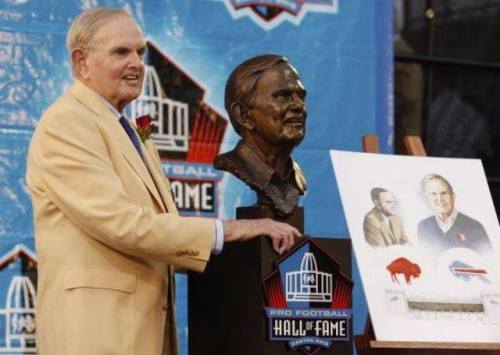Of all of Berlioz's literary muses, and there were many, none burned quite so bright in his head and heart than Shakespeare. It was through a performance of
Hamlet that Berlioz first saw actress Harriet Smithson, thus inspiring his most famous and enduring work, and it was Shakespeare who inspired Berlioz to write what is, for me, his single greatest symphony and work in general. It's his third symphony,
Romeo et Juliette.
The fact that Shakespeare had such an effect on Berlioz is all the more remarkable given that Berlioz discovered Shakespeare in translation, and given that in Berlioz's day, translation wasn't quite so rigorous a pursuit as it is now. The focus was not so much on accuracy, and translators felt little compunction toward changing a work to suit their own ideas. The version Berlioz saw had Juliet awaken in her tomb, so that the lovers could have one last moment together before dying. Translators at that time just didn't much care about total fidelity to a work, for good or ill. It little mattered, though: Berlioz was thunderstruck.
Nicolo Paganini had commissioned a work from Berlioz, if you'll remember from last week; while disappointed in the result, Paganini was as good as his word, and paid Berlioz the 20,000 francs he had promised. That influx of cash gave Berlioz the financial freedom he needed to pursue his next work, which is the very symphony we are considering here. And what a work it is.
Romeo et Juliette is a symphony mainly because Berlioz says it is. There are almost none of the standard features one might expect from a symphony. Instead of four movements, here we have seven (or even more, depending on how they are counted). Voices feature strongly throughout, culminating in a massive choral finale that depicts the Capulets and Montagues coming together after the deaths of their children. The work is heavily programmatic, going right down the line and basically telling the story of the play in the right order, starting with the fighting in the square and the intervention of the Prince.
With all the symphony's uses of vocal forces, it might be surprising, then, to note that the most intimate parts of the story are depicted purely orchestrally. Berlioz never allows voices to depict either Romeo
or Juliet; instead, when the lovers are called for, the orchestra depicts their moods. This results in the central section of the work, when we "hear" Romeo at the Ball (where he first sees Juliet), the love scene, and then a brilliant and effervescent scherzo depicting Queen Mab (as described in the play by Mercutio). The symphony's use of voice is pretty much restricted to the people affected most by the two doomed lovers, but the lovers themselves are only shown in the most deeply abstract music of the orchestra itself. That level of music insight is a prime reason why I love Berlioz as much as I do.
Yes, this symphony stretches the very idea of what constitutes a symphony in the first place, but it's not hard to see the trend continuing through music history later on. In terms of form, this work clearly anticipates Mahler by fifty years; in terms of musical depiction of drama, this work clearly influenced Wagner (who actually sent Berlioz an autographed copy of his score to
Tristan and Isolde, noting his admiration for
Romeo et Juliette in the inscription). All that, of course, would be of little concern were the music itself not so engaging. Berlioz tended to have an odd time with melody, and this work is no different -- but the "Romeo Alone and the Capulets' Ball" movement is its own little tone poem, and the love music here is, to my ears, utterly rapturous. Even that movement alone amazes in its construction: it begins with Romeo wandering after the ball, struck by love, and we hear the tenors offstage, singing snatches of the main dance music from the ball. But the tenors fade away, and Berlioz's main melody eventually begins. But somehow it sounds tentative at first, as though Romeo is trying to put what is in his heart into music. Eventually, though, the lovers come together, and the music flowers.
There isn't a single aspect of Berlioz as a musician that is not in evidence in
Romeo et Juliette: his storytelling approach to music, his belief in the power of the orchestra to convey emotion, his skill at writing orchestra textures that still sound fresh to this day. While I have always discounted the notion that music can, by itself, tell a story, this work stands as the finest example I know that that doesn't mean that story is story and music is music and never the twain shall meet. Here, story informs the music and the music informs the story. If Hector Berlioz really
was only known for a single work, and this was that work, he'd be in my personal Pantheon anyway.
The symphony is so large that this performance is in three parts. There are a few complete performances on YouTube, including a very nice live one (with an annoyingly sedate audience). The three parts correspond to the sections of the symphony, which break out like this (courtesy
Wikipedia):
Part I
1. Introduction: Combats (Combat) - Tumulte (Tumult) - Intervention du prince (Intervention of the prince) - Prologue - Strophes - Scherzetto
Part II
2. Roméo seul (Romeo alone) - Tristesse (Sadness) - Bruits lointains de concert et de bal (Distant sounds from the concert and the ball) - Grande fête chez Capulet (Great banquet at the Capulets)
3. Scène d'amour (Love scene) - Nuit serène (Serene night) - Le jardin de Capulet silencieux et déserte (The Capulets' garden silent and deserted) - Les jeunes Capulets sortant de la fête en chantant des réminiscences de la musique du bal (The young Capulets leaving the banquet singing snatches of music from the ball)
4. Scherzo: La reine Mab, reine des songes (Queen Mab, the queen of dreams – the Queen Mab Scherzo)
Part III
5. Convoi funèbre de Juliette (Funeral cortège for the young Juliet): "Jetez des fleurs pour la vierge expirée" ("Throw flowers for the dead virgin")
6. Roméo au tombeau des Capulets (Romeo at the tomb of the Capulets) - Invocation: Réveil de Juliette (Juliet awakes) - Joie délirante, désespoir (Delirious joy, despair) - Dernières angoisses et mort des deux amants (Last throes and death of the two lovers)
7. Finale:
La foule accourt au cimetière (The crowd rushes to the graveyard) - Des Capulets et des Montagus (Fight between the Capulets and Montagues) - Récitatif et Air du Père Laurence (Friar Lawrence's recitative and aria) Aria: "Pauvres enfants que je pleure" ("Poor children that I weep for") - Serment de réconciliation (Oath of reconciliation) Oath: "Jurez donc par l'auguste symbole" ("Swear by the revered symbol")
Next week: Berlioz's final symphony, which is, again, rather unique.













